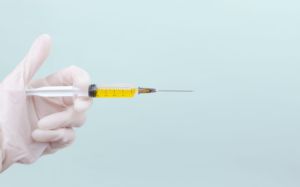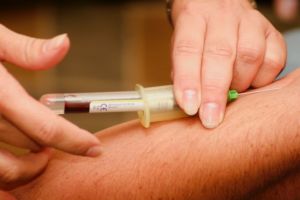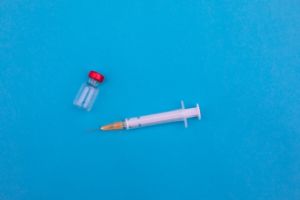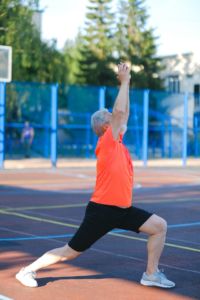
Hip pain caused by osteoarthritis can interfere with daily activities and even make you dependent on pain pills. If you’ve tried other medical treatments without success, injections may be the answer. There are several kinds of injections that can be used to treat hip pain. They each come with their own benefits, and some patients find success with one kind and not with another. Your healthcare provider can help you decide which treatment may be most effective for you. Here are some options to discuss:

Corticosteroid Injections
Corticosteroids are a substance similar to the steroids that your body produces naturally. These chemicals are part of your fight or flight response, and they work to decrease inflammation. Since inflammation is one of the pain-causing factors in osteoarthritis, corticosteroids are often effective for reducing pain. They are FDA approved for joint pain, and a lot of research has been done on using them safely.
After a cortisone shot, patients typically experience an increase in pain for 24 to 48 hours. After this period, their pain will dramatically decrease. Many patients experience pain relief as well as an increased range of motion. How long this relief lasts depends on many factors. Typically the effects last anywhere from 6 weeks to 6 months. Most health care providers don’t like to give cortisone shots more often than every three to four months. This is because repeated cortisone shots too close together may damage healthy tissue. This is less of a problem for older arthritis patients than for younger patients because older patients often have less healthy tissue remaining in the joint.
Cortisone shots are a good option for patients with advanced arthritis who have not experienced significant relief with other treatments.

Platelet Rich Plasma Injections
Platelet-rich plasma is composed of blood cells called platelets that can help decrease inflammation and encourage healing. Your provider will draw a small amount of blood from your arm then process it in a centrifuge to separate the platelets. The platelets will then be injected into the hip joint.
Blood flow is a part of your natural healing process. The body sends blood to the wounded area to carry nutrients, clotting factors, and other chemicals that help repair the damage. Joints, especially in older individuals, often don’t receive as much blood flow as they need to heal. PRP injections can encourage natural healing. Since this is a natural process that involves the repair of damaged tissues, pain relief doesn’t happen immediately—most patients experience relief within 2 to 6 weeks of receiving the injection. Your pain and stiffness will then continue to decrease over a period of three to six months. Some patients experience lasting relief without repeated treatments.
PRP has minimal side effects and is considered safe for most people, but there are some contraindications, such as anemia. The best candidates are those with mild to moderate degeneration. Since PRP encourages healing, there must be some healthy tissue in the joint that can heal. Your health care provider can let you know if you are a good candidate for this treatment.
Hyaluronic Acid Injections
A healthy joint contains synovial fluid. Synovial fluid lubricates and cushions the joint. It contains a substance called hyaluronic acid that is responsible for many of its properties. Over time, the hyaluronic acid levels in the synovial fluid decrease. The synovial fluid becomes thinner and less able to protect the cartilage of the joint. This contributes to the development of osteoarthritis. For those in the early stages of arthritis, a hyaluronic acid injection can relieve pain and help to prevent further degeneration.
There are very few side effects associated with hyaluronic acid injections, and most are mild, such as swelling and redness that lasts for a day or two. Some patients experience lasting relief with one injection, while others may require two or three. Your health care provider can let you know what stage of joint degeneration you have and whether hyaluronic acid is the best choice for you.
What to Expect After an Injection
Each of these injections requires a short recovery period. For cortisone shots, expect to feel a bit worse for a day or two before you feel better. You can apply ice as directed by your healthcare provider to relieve pain and swelling during those first two days. Once you start to notice a decrease in pain, you can resume normal activities.
Hyaluronic acid injections will sometimes cause initial swelling for a day or two, and it may be a couple of weeks before you notice an improvement. This is because, like PRP injections, a natural process is taking place, and your body is healing. Most providers recommend that you avoid high-impact activities like running until you begin to feel the effects of the injection.
After a PRP injection, your provider will usually recommend that you avoid strenuous activity for about four weeks and then come in for a follow-up appointment to see how the joint is healing. You should also avoid over-the-counter pain relievers like ibuprofen, as these can interfere with the healing process.
A Whole-Body Treatment Plan
Here at Vanguard Spine and Sport, we believe in a holistic approach to health. Our providers offer all the injections mentioned in this article, in addition to lifestyle advice and nutritional guidance. Medical treatments for joint pain work better when combined with a healthy diet. Being overweight puts additional strain on joints and increases wear and tear. Our chiropractors can create a personalized treatment plan for you that will decrease your pain and improve your quality of life.




